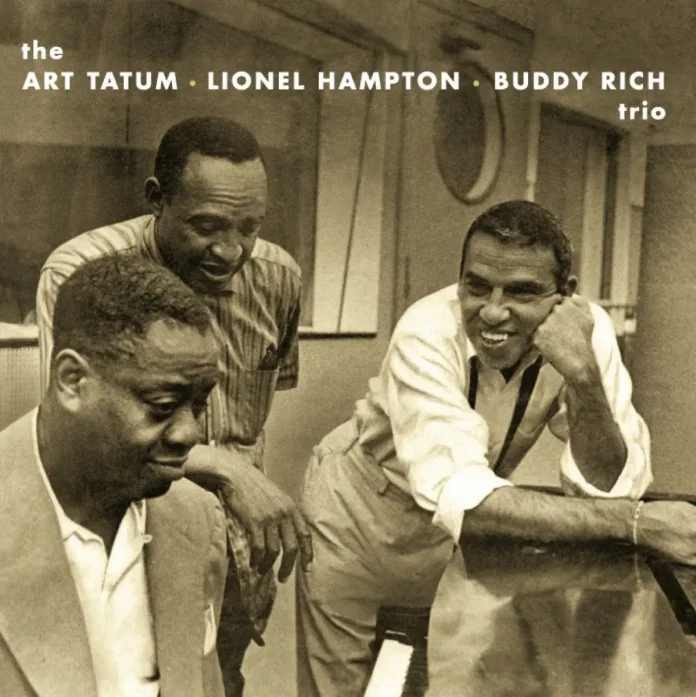By the 50s Tatum was a living legend, after more than 20 years of prolific recording. His spectacular showcase solos astonished listeners with an incomparable array of virtuoso skills. He could swing mightily too, with ingenious rhythmic variations and subtle harmonic shifts developed from an extended stride piano style influenced originally by Fats Waller. Virtually a one-man orchestra, he needed no musical support for his complex torrent of solo invention. Nevertheless, in 1943 he had formed a trio with Tiny Grimes and Slam Stewart, doubtless to extend club and concert appeal.
In the mid-50s Norman Granz, aware that Art’s health was deteriorating rapidly, and with hard-nosed pragmatism, urged the ever-obliging pianist to record more prolifically than ever, including breaking new ground alongside star company in small-group recordings such as on this album. (Other collaborators included Ben Webster, Sweets Edison and Buddy De Franco.) Tatum, virtually blind for most of his life, was to die in 1956 aged 47.
Art finds himself here in fellow stellar company with Lionel Hampton and the great Buddy Rich. Rapport between Tatum and Hampton seems spontaneous and instinctual, in contrast to the arranged, close-knit runs and figures Hamp had shared with Teddy Wilson and Goodman. Hallelujah and How High The Moon are animated by lively, off-the-cuff rhythmic interplay. Art’s solos (so inventive on Prisoner Of Love) are absorbing and very busy as usual, incredibly fast-fingered rippling cascades filling any sizeable space. Steeped in his kaleidoscopic ideas, his backing as accompanist was rarely unobtrusive and not always compatibly supportive.
The preferred approach to soloing for the energetic and exuberant Hampton usually involved a lengthy build-up – and he could toss around a few fireworks himself too. Here he decides, apparently off the cuff, to extend a storming solo in Makin’ Whoopee. In ballad style, he solos beautifully on More Than You Know, leaving (in contrast to Tatum) space around his phrases which helps to isolate and define the pattern of his ideas. Buddy Rich’s crisply propulsive brushwork, subtle rhythmic emphasis and tight control of tempo and dynamics confirm his reputation as one of the greats.
With ringing flurries of piano notes and the bell-like, clinical tone of the vibes filling the air the sound in general is rather celestial and chilly. I feel that adding the underpinning tonal warmth and depth of a double bass in the hands of say Ray Brown or the like would have been a welcome addition of tonal fullness, depth and range.
The playlist is familiar and perhaps a touch unadventurous, but gold-stamped for quality. Tempos tend towards uppish with nothing really slow. There are six bonus tracks added by the indefatigable trio recorded on the same day, but not used in the original LP (Clef MGC-709), all complete and equally fine with no repeats. All in all a masterclass, to be treasured, of classic small-group jazz from immortal icons.
Discography
(1) What Is This Thing Called Love; I’ll Never Be The Same; Makin’ Whoopee; Hallelujah; Perdido; More Than You Know; How High The Moon; (2) This Can’t Be Love; Stars Fell On Alabama; Lover Man; Prisoner Of Love; Love For Sale; Body And Soul (76.11)
(1) Tatum (p); Hampton (vib); Rich (d). Los Angeles, USA, 1 August 1955. (2) as (1) Bonus tracks not included on the original LP.
Poll Winners 27273















